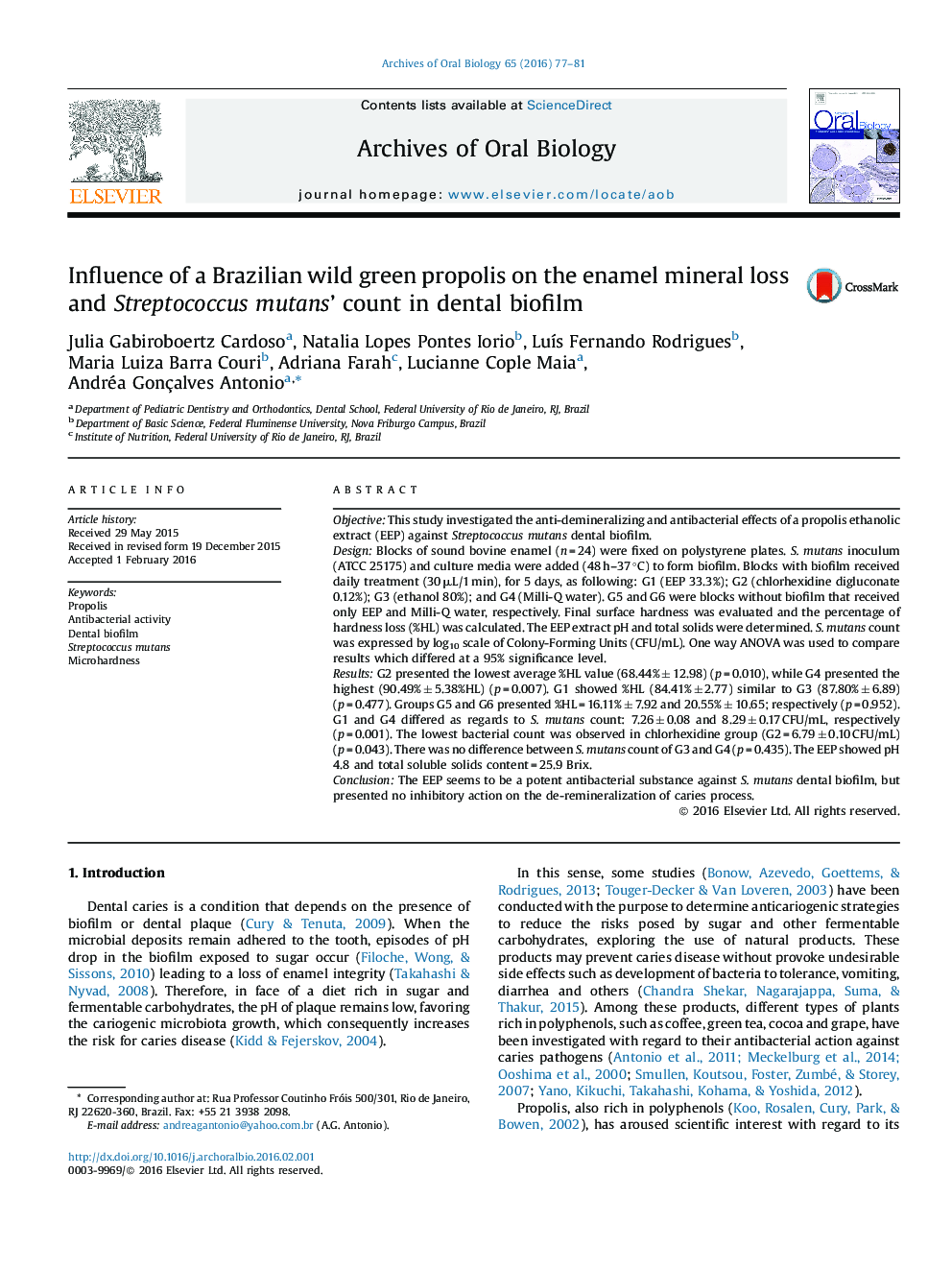| کد مقاله | کد نشریه | سال انتشار | مقاله انگلیسی | نسخه تمام متن |
|---|---|---|---|---|
| 3120684 | 1583288 | 2016 | 5 صفحه PDF | دانلود رایگان |
• The inhibitory action of a wild green propolis was tested against a Streptococcusmutans dental biofim.
• The tested propolis inhibited the growth of S. mutans biofilm.
• The tested propolis showed low level of influence in inhibiting the demineralization of the enamel analyzed.
ObjectiveThis study investigated the anti-demineralizing and antibacterial effects of a propolis ethanolic extract (EEP) against Streptococcus mutans dental biofilm.DesignBlocks of sound bovine enamel (n = 24) were fixed on polystyrene plates. S. mutans inoculum (ATCC 25175) and culture media were added (48 h–37 °C) to form biofilm. Blocks with biofilm received daily treatment (30 μL/1 min), for 5 days, as following: G1 (EEP 33.3%); G2 (chlorhexidine digluconate 0.12%); G3 (ethanol 80%); and G4 (Milli-Q water). G5 and G6 were blocks without biofilm that received only EEP and Milli-Q water, respectively. Final surface hardness was evaluated and the percentage of hardness loss (%HL) was calculated. The EEP extract pH and total solids were determined. S. mutans count was expressed by log10 scale of Colony-Forming Units (CFU/mL). One way ANOVA was used to compare results which differed at a 95% significance level.ResultsG2 presented the lowest average %HL value (68.44% ± 12.98) (p = 0.010), while G4 presented the highest (90.49% ± 5.38%HL) (p = 0.007). G1 showed %HL (84.41% ± 2.77) similar to G3 (87.80% ± 6.89) (p = 0.477). Groups G5 and G6 presented %HL = 16.11% ± 7.92 and 20.55% ± 10.65; respectively (p = 0.952). G1 and G4 differed as regards to S. mutans count: 7.26 ± 0.08 and 8.29 ± 0.17 CFU/mL, respectively (p = 0.001). The lowest bacterial count was observed in chlorhexidine group (G2 = 6.79 ± 0.10 CFU/mL) (p = 0.043). There was no difference between S. mutans count of G3 and G4 (p = 0.435). The EEP showed pH 4.8 and total soluble solids content = 25.9 Brix.ConclusionThe EEP seems to be a potent antibacterial substance against S. mutans dental biofilm, but presented no inhibitory action on the de-remineralization of caries process.
Journal: Archives of Oral Biology - Volume 65, May 2016, Pages 77–81
